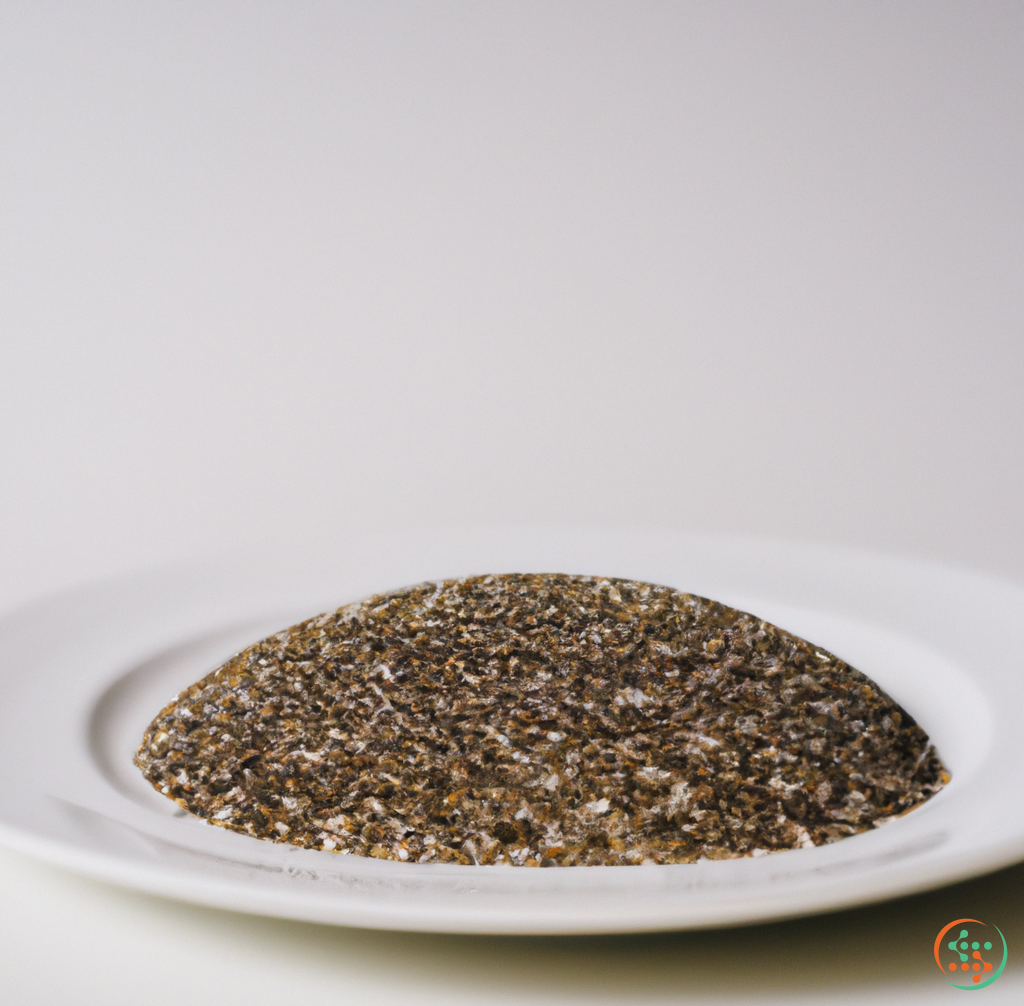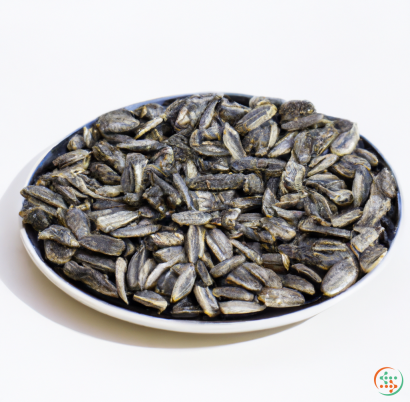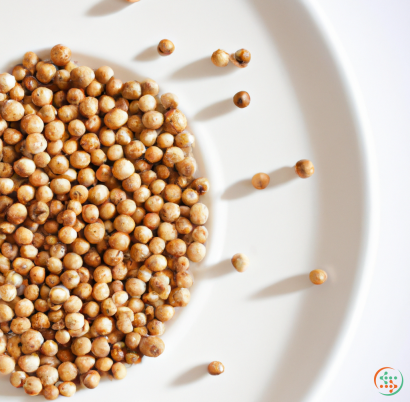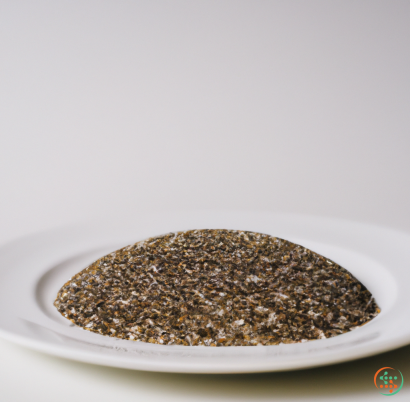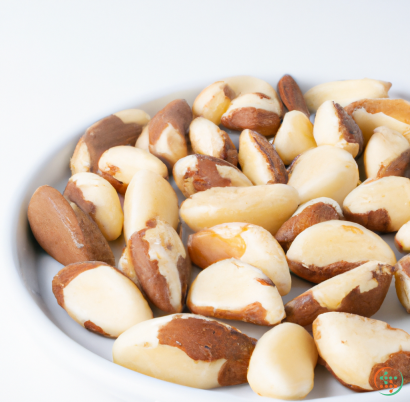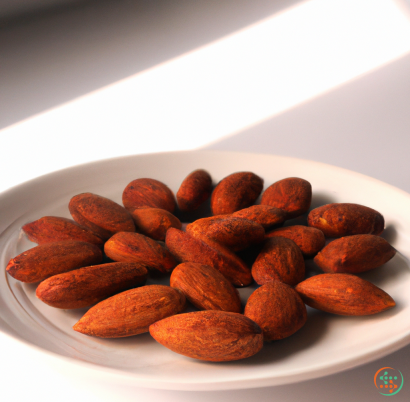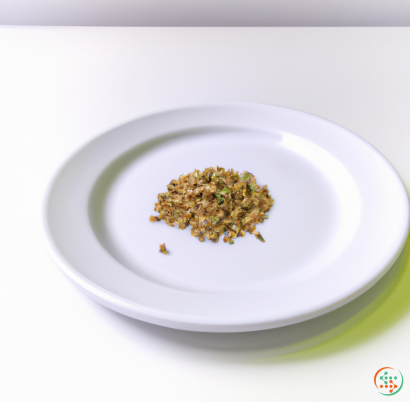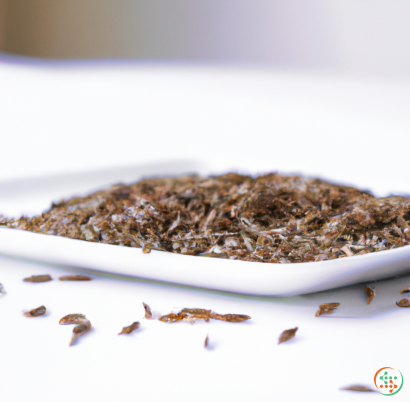Chia Seeds
Chia seeds are a dietary staple in many parts of the world. The seeds are small, black and most notably, nutritious. Originally native to Mexico and Guatemala, the chia plant has been cultivated and consumed as a part of diets for centuries. While the popularity of these beneficial seeds has been steadily increasing in recent years, chia seeds remain shrouded in mystery to many. Let’s delve into what exactly chia seeds are, their benefits and how to incorporate these nutrient powerhouses into your diet.
Chia seeds are the small, oval, black seeds of a flowering perennial plant that is native to Mexico and Guatemala and is a member of the mint family. The word “chia” derives from the Nahuatl language and translates to mean “strength” or “power” – an apt description for these potent little seeds.
In terms of nutritional benefits, chia seeds are incredibly high in essential nutrients. Specifically, they are rich in important minerals such as phosphorus, calcium, magnesium, and manganese as well as vitamins such as thiamine and riboflavin. Additionally, these seeds are an excellent source of heart-healthy unsaturated fatty acids, with one serving containing nearly five grams of omega-3 fatty acids. Chia seeds are also extremely rich in dietary fiber, containing more per gram than most other plant-based sources.
It’s clear that these tiny black seeds offer great nutritional benefits, but how do you actually incorporate them into your diet? Chia seeds are incredibly versatile and easy to use in cooking. They are often ground and added to smoothies, oatmeal, cereal, or yogurt. The ground form also works well as a thickener in sauces, custards, and baked goods. Whole chia seeds forgo the need for grinding and can be added to salads and grain dishes. Beyond these uses, chia seeds can act as an egg replacement in vegan recipes simply by mixing the seeds with water 1: 3 ratio and allowing them to sit for 5 minutes until they form a gelatinous mixture.
It should also be noted that chia seeds should not be eaten raw and should always be thoroughly cooked or soaked before consuming because chia seeds can absorb a lot of moisture which can cause discomfort if eaten without any preparation.
Due to the ease of incorporating these seeds into your diet, chia seeds offer a number of incredible health benefits. As previously mentioned, chia seeds contain high levels of both omega-3 fatty acids and dietary fiber. These two compounds provide numerous benefits, including helping to reduce inflammation, promoting healthy digestion, and aiding in weight loss. Furthermore, studies suggest that consuming chia seeds may help to lower cholesterol, regulate blood sugar levels, and even protect against certain types of cancer.
The benefits of these incredibly nutritious seeds can no longer be denied and the list of uses for chia seeds is ever increasing. Whether you prefer grinding them into your smoothies, adding them to salads or desserts, there’s no doubt that chia seeds can and should be incorporated into your diet. Make sure to check with your doctor before making any dietary changes and do your research to make sure you’re purchasing a high quality chia seed product. With the right balance of healthy recipes, consuming chia seeds can be an easy, delicious and nutritious way to add a superfood boost to your routine.
Chia seeds are small, oval- shaped, black seeds with a hint of gray or white that have been cultivated since the days of the Aztecs. They are extremely versatile and are found in many dishes, ranging from breads and desserts to smoothies and savory dishes. With a mere teaspoon containing as many as 4.7 g of dietary fiber, 0.7 g of omega-3 fatty acids, and 2 g of protein, chia seeds have been named “the world’s super food". In addition, chia seeds are also said to possess anti-inflammatory properties, help with blood sugar control, and provide energy for longer periods of time. Therefore, understanding how these incredibly nutritious, tiny seeds are created, grown, and travel from the farm to your dinner plate helps to ensure that you benefit from all their amazing properties.
The Story of How Chia Seeds are Created
Chia is a species of flowering plant in the mint family, and that is also native to South and Central America. It is believed that its seeds were first cultivated and used as part of the Mayan diet thousands of years ago, although they have recently been re-discovered and widely appreciated. Chia seeds, also known as Salvia Hispanica, are fairly resilient and capable of growing in a variety of climates, including hot and dry areas. They are usually harvested once a year, usually around April or May.
The harvesting process starts with the farmer cutting down the plant and drying the stems over a fire or on other warming devices in order to produce seeds suitable for human consumption. Once they are dried, they are then placed in baskets and beaten with sticks in order to loosen the seeds from the stems and separate them from the stalks and husks. Finally, the loose chia seeds are passed through a sieve to remove any remaining debris and then manually inspected for quality.
The next step in the process is the manufacturing and packaging of the chia seeds. First, the seeds are taken to a processing plant where they are milled, roasted, milled again, and then sorted and packaged, according to the qualities desired for the product and the type of use for which it will be employed. Once packaged, the chia seed products are then ready to be shipped out to the customers and consumers.
Chia Seeds from Farm to Plate
Once the harvested and processed chia seeds have been packaged and shipped out, they can travel worldwide, arriving to their final destination where they are ready to become part of a delicious meal.
When chia seeds are cultivated, they are usually sent to large processing plants located either in their country of origin or to a nearby country. From there, they are shipped out to countries in different parts of the world, such as the United Kingdom, the United States, and other countries in Europe and Asia. The chia seeds are usually shipped in bulk containers and transported via ocean freighters, air carriers, or trucks.
Once the chia has arrived in its destination country, it is either sent directly to the customer or to a local distributor, who will then supply local groceries, convenience stores, health food stores and other retail outlets, which in turn make the products available for customers.
Uses of Chia Seeds
Chia seeds are incredibly versatile, and as such, they have a wide variety of uses. They can be used to make breads, crackers, pancakes, smoothies and cereals, just to name a few. Moreover, due to their unique nutritional benefits, they are often used as a healthy addition to many meals, including salads, oatmeal, and yogurt. Chia seeds are also used in baking and as a topping for other dishes, like the traditional Latin American drink, horchata de chia. In addition to being a great source of dietary fiber and omega-3 fatty acids, they are also believed to reduce inflammation, help with blood sugar control, and help provide energy for longer periods of time.
Conclusion
Chia seeds are a remarkably nutritious, versatile ingredient with a vast number of culinary and health applications. From their humble beginnings in the ancient Mayan culture to being shipped around the world and brought to a dinner plate in many countries, chia seeds have truly earned the title of “super food”. Whether eaten as a snack, blended into a smoothie, or added to make muffins, chia seeds are a great way to add nutrition and healthy benefits to many of your favorite meals.
| Vitamin E | 0.5 mg | |
| Vitamin C | 0.0016 grams | |
| Vitamin B1 | 0.62 mg | |
| Vitamin B2 | 0.17 mg | |
| Vitamin B3 | 0.00883 grams | |
| Vitamin B9 | 0.049 mg |
| Calcium | 0.631 grams |
Daily Value 1.3 g
|
| Iron | 0.00772 grams |
Daily Value 0.018 g
|
| Magnesium | 0.335 grams |
Daily Value 0.4 g
|
| Phosphorus | 0.86 grams |
Daily Value 1.25 g
|
| Potassium | 0.407 grams |
Daily Value 4.7 g
|
| Sodium | 0.016 grams |
Daily Value 2.3 g
|
| Zinc | 0.00458 grams |
Daily Value 0.011 g
|
| Copper | 0.92 mg |
Daily Value 0.9 mg
|
| Manganese | 0.00272 grams |
Daily Value 0.0023 g
|
| Selenium | 0.0552 mg |
Daily Value 0.055 mg
|
| Tryptophan | 0.436 grams | |
| Threonine | 0.709 grams | |
| Isoleucine | 0.801 grams | |
| Leucine | 1.371 grams | |
| Lysine | 0.97 grams | |
| Methionine | 0.588 grams | |
| Cystine | 0.407 grams | |
| Phenylalanine | 1.016 grams | |
| Tyrosine | 0.563 grams | |
| Valine | 0.95 grams | |
| Arginine | 2.143 grams | |
| Histidine | 0.531 grams | |
| Alanine | 1.044 grams | |
| Aspartic Acid | 1.689 grams | |
| Glutamic Acid | 3.5 grams | |
| Glycine | 0.943 grams | |
| Proline | 0.776 grams | |
| Serine | 1.049 grams |
| Total Sugars | 0.131141 grams |
per 100g
|
| Myristic acid (14:0) | 0.03 grams |
|
| Palmitic acid (16:0) | 2.17 grams |
|
| Stearic acid (18:0) | 0.91 grams |
|
| Arachidic acid (20:0) | 0.09 grams |
|
| Behenic acid (22:0) | 0.03 grams |
|
| Total Saturated fatty acids: | 3.23 g | |
| Oleic acid (18:1) | 2.2 grams |
|
| Palmitoleic acid (16:1) | 0.03 grams |
|
| Gadoleic acid (20:1) | 0.05 grams |
|
| Total Monounsaturated fatty acids: | 2.28 g | |
| Omega-3 Alpha-linolenic acid (18:3) | 17.83 grams |
|
| Linolenic acid (18:3) | 17.83 grams |
|
| Linoleic acid (18:2) | 5.84 grams |
|
| Total Polyunsaturated fatty acids: | 41.5 g | |
